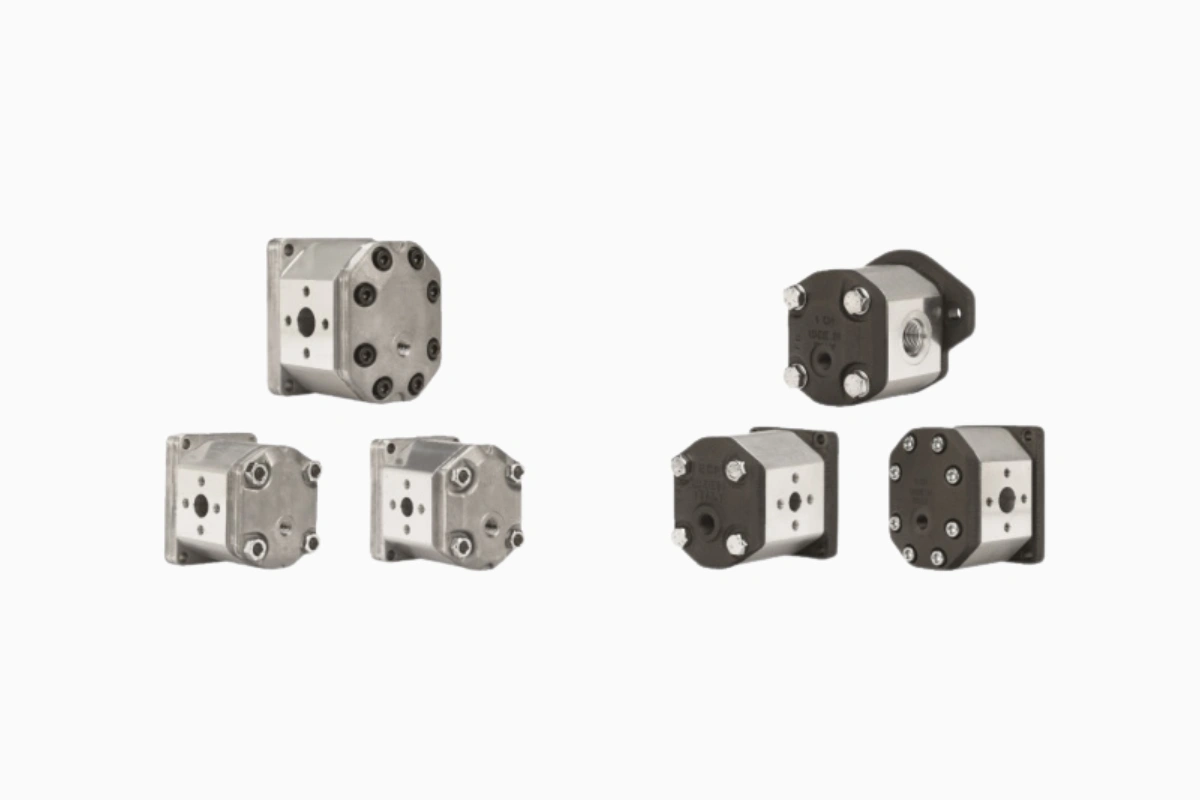Hydraulic motors are fundamental components in many hydraulic systems, used to convert fluid energy into mechanical energy. Thanks to their ability to generate torque and rotational motion, hydraulic motors are applied in a wide range of industries, from heavy industry to automation. But what are hydraulic motors? Here’s an article that explains their operating principles, main types, and most common applications.
How do hydraulic motors work?
The operation of a hydraulic motor is based on the transformation of hydraulic energy, coming from a pressurized fluid, into rotational mechanical energy. The fluid, typically hydraulic oil, enters the motor through an inlet, applying pressure on internal components like vanes, pistons, or gears. This internal movement generates rotation that can be used to power machinery, vehicles, or equipment.
Main components
- Motor housing: The outer casing that encloses and protects the internal components.
- Shaft: The rotating element that transmits the power generated by the hydraulic motor to other mechanical components.
- Valves: Regulate the fluid flow within the motor, controlling the speed and direction of the rotational movement.
Hydraulic motors are highly valued for their ability to generate high forces and torque in relatively compact spaces, making them ideal for mobile and industrial applications.
Types of hydraulic motors
Gear motors
Gear motors are among the simplest and most common in the hydraulic sector. They operate thanks to two gears that rotate in opposite directions inside a chamber. The fluid enters the chamber and pushes the gears into motion, generating the rotation of the motor shaft.
They are favored for:
- Simple construction: They are easy to produce and maintain due to their simple design.
- Reliability: They offer stable and reliable performance over time, making them ideal for long-lasting applications.
- Low cost: Compared to other types, gear motors are more affordable to produce and install.
Vane motors
Hydraulic vane motors work through an eccentric rotor with movable vanes that move within a chamber. The hydraulic fluid enters the chamber, causing the vanes to slide and creating rotational movement.
Why choose them:
- Quiet operation: Compared to other types, vane motors are quieter, making them ideal for noise-sensitive environments.
- Efficiency: They offer good energy efficiency, as they minimize energy losses during operation.
- Compactness: They are particularly suited to applications that require small-sized motors with high efficiency.
Piston motors
Piston motors are designed for applications that require high pressures and high torque. They work by using pistons that move within cylinders, driven by hydraulic fluid, thus generating rotation.
Here are the advantages:
- High torque: They can generate high torque, making them ideal for heavy machinery and industrial equipment.
- Precision: They offer precise control of speed and power, allowing for complex operations to be managed.
- High-pressure resistance: They are suitable for applications where the hydraulic system must operate at very high pressures.
For more details on hydraulic motors and their applications, visit our page dedicated to Hydraulic Motors – LubeTeam Hydraulic.
Common applications of hydraulic motors
Industrial sector
Hydraulic motors are widely used in the industrial sector to power heavy machinery and production lines. Thanks to their ability to generate high torque at low speeds, they are particularly appreciated in applications requiring high power and precision. Examples include hydraulic presses, material handling systems, and wood and metalworking equipment.
Agricultural sector
In the agricultural sector, hydraulic motors are used in numerous pieces of equipment, such as tractors, combine harvesters, and plows. These motors power various mechanical devices, improving efficiency and reducing manual workload. Their ability to operate in tough conditions and on rough terrain makes them indispensable for many farming operations.
Mobile applications
Hydraulic motors are also often used in vehicles and mobile equipment, such as excavators, cranes, and trucks. In these applications, hydraulic motors provide the power needed to lift and move heavy loads, improving operational efficiency and ensuring operator safety.


